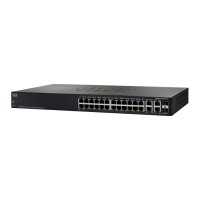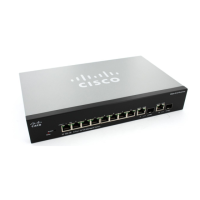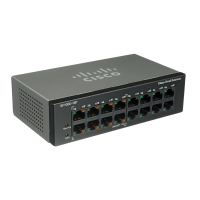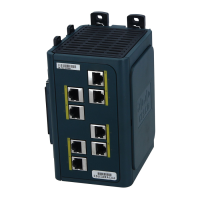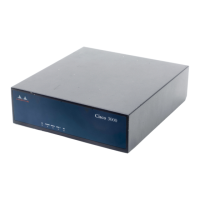Spanning Tree
Configuring Rapid Spanning Tree Settings
236 Cisco Small Business 200, 300 and 500 Series Managed Switch Administration Guide (Internal Version)
14
- Blocking—The port is currently blocked, and cannot forward traffic (with
the exception of BPDU data) or learn MAC addresses.
- Listening—The port is in Listening mode. The port cannot forward traffic,
and cannot learn MAC addresses.
- Learning—The port is in Learning mode. The port cannot forward traffic,
but it can learn new MAC addresses.
- Forwarding—The port is in Forwarding mode. The port can forward
traffic and learn new MAC addresses.
• Designated Bridge ID—Displays the bridge priority and the MAC address
of the designated bridge.
• Designated Port ID—Displays the priority and interface of the selected
port.
• Designated Cost—Displays the cost of the port participating in the STP
topology. Ports with a lower cost are less likely to be blocked if STP detects
loops.
• Forward Transitions—Displays the number of times the port has changed
from the Blocking state to Forwarding state.
• Speed—Displays the speed of the port.
• LAG—Displays the LAG to which the port belongs. If a port is a member of
a LAG, the LAG settings override the port settings.
STEP 4 Click Apply. The interface settings are written to the Running Configuration file.
Configuring Rapid Spanning Tree Settings
Rapid Spanning Tree Protocol (RSTP) enables a faster STP convergence without
creating forwarding loops.
The RSTP Interface Settings page enables you to configure RSTP per port. Any
configuration that is done on this page is active when the global STP mode is set
to RSTP or MSTP.
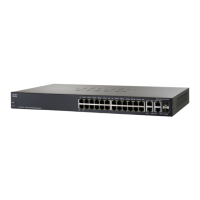
